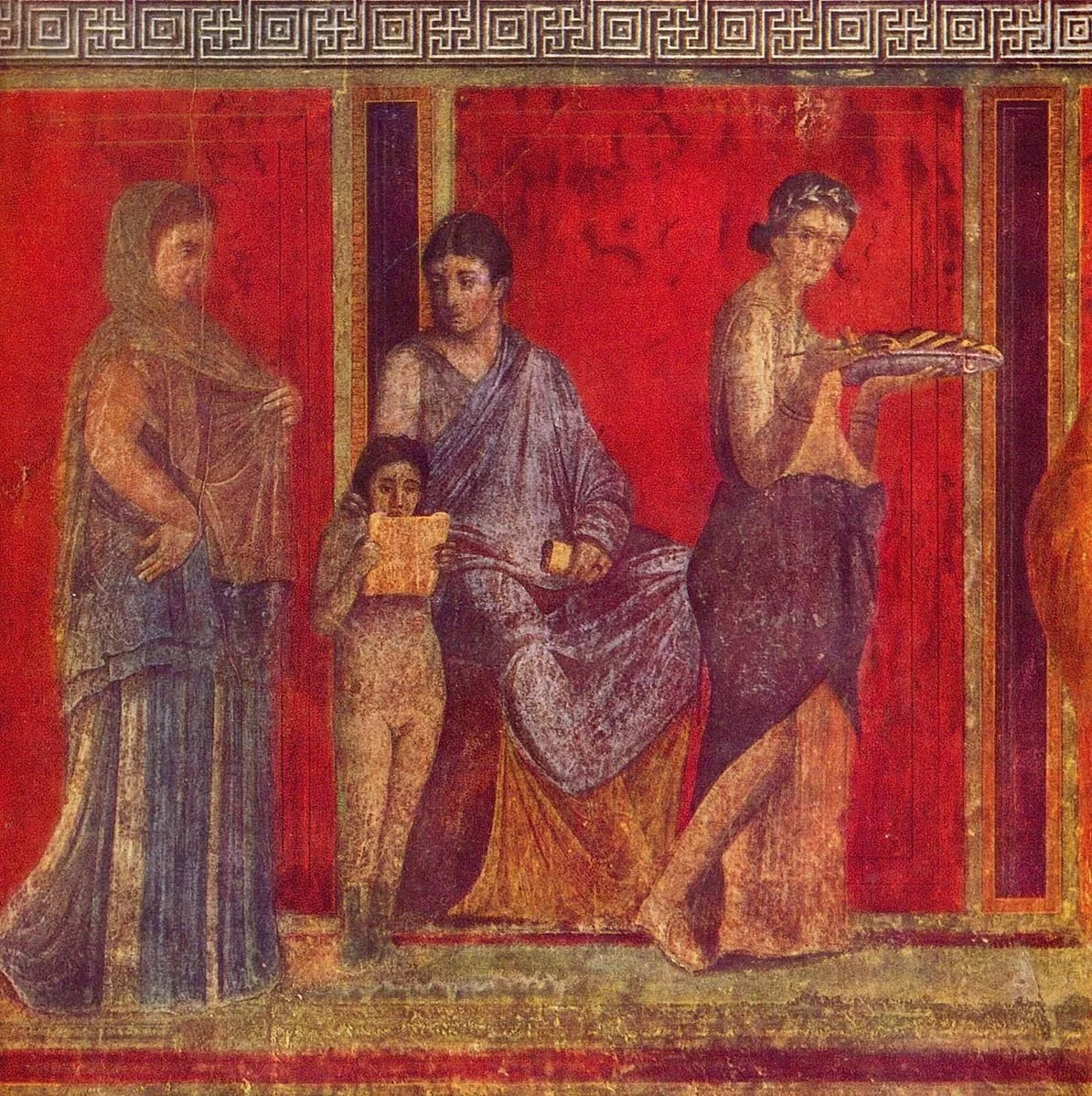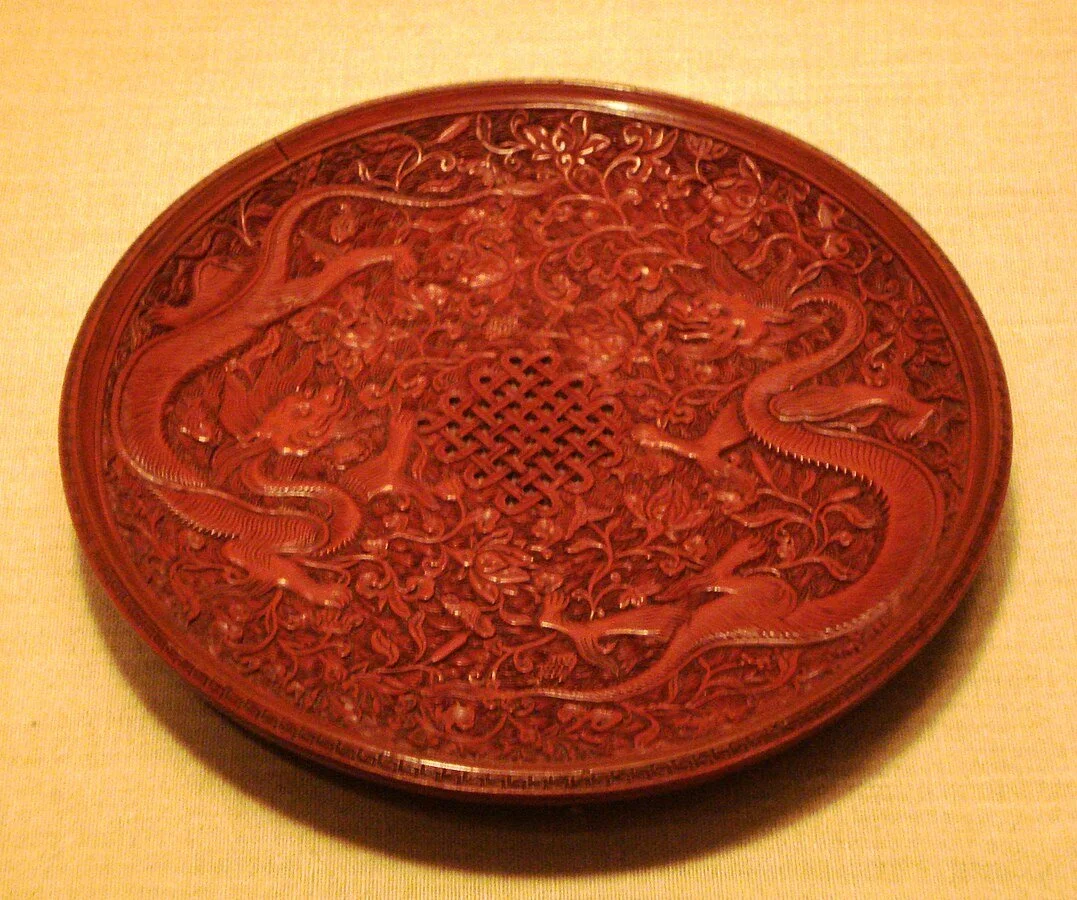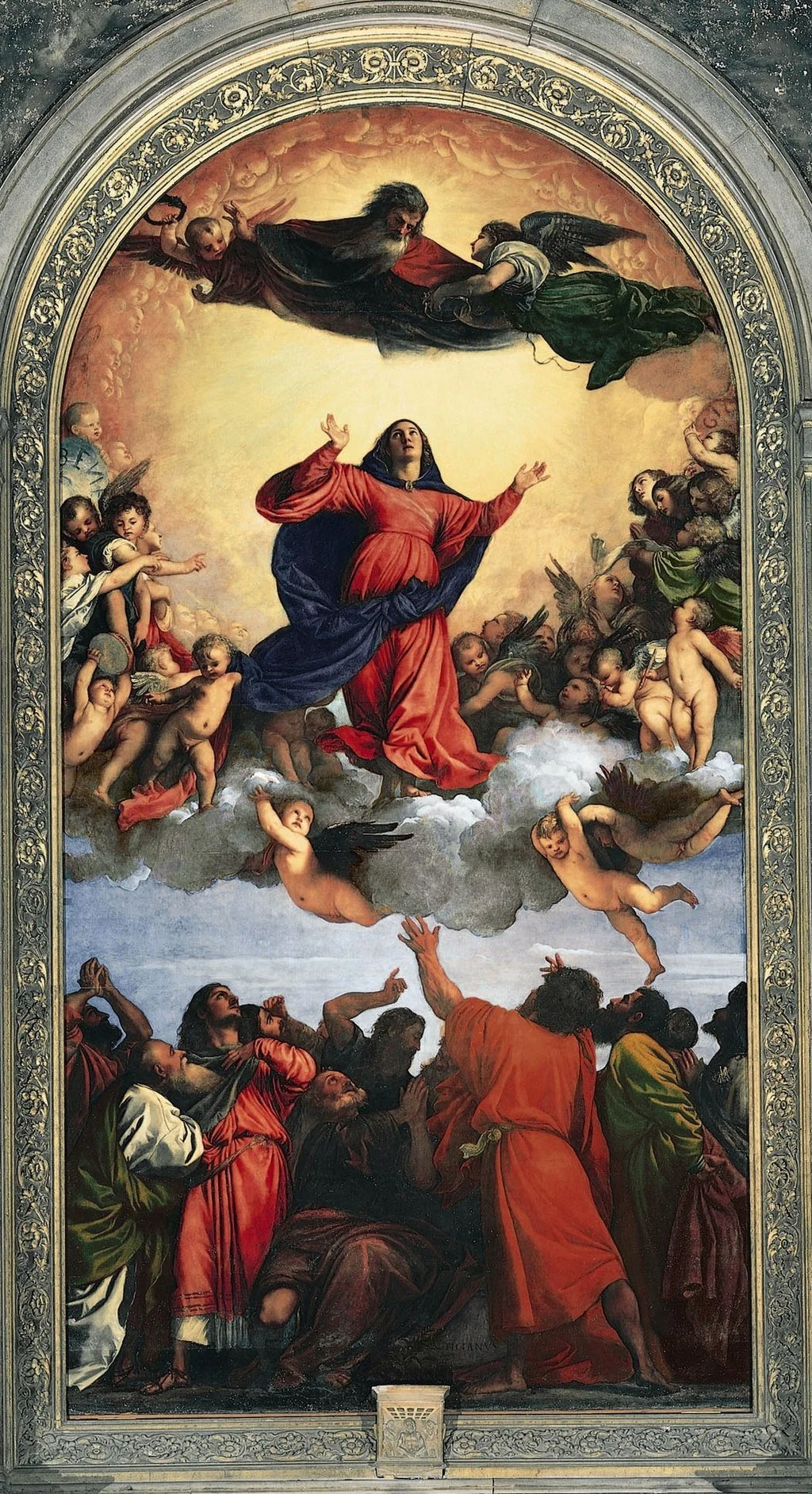Vermilion in Oil Painting: History, Properties, and Conservation Challenges
Painting from Pompeii in Italy. c. 60 BC. Wikimedia Commons.
Vermilion, chemically identified as mercuric sulphide (HgS), occupies a central position in the history of artists’ pigments. Its striking scarlet hue, high opacity, and strong tinting power established it as one of the most desirable colours for painters from antiquity through the nineteenth century. The pigment’s appeal lay not only in its visual qualities but also in its symbolic associations with wealth, authority, and sacredness. Despite its prominence, vermilion is characterised by chemical instability that complicates both its historical use and its conservation today.
This article examines the role of vermilion in oil painting with reference to its historical development, methods of manufacture, optical and handling properties, interaction with other pigments, and its long-term behaviour in painted surfaces. Conservation challenges and the analytical methods used to study the pigment will also be considered, highlighting the intersection between artistic practice and scientific research.
Historical Background
The earliest use of vermilion derives from natural cinnabar, a mineral form of mercuric sulphide. Archaeological evidence indicates its presence in wall paintings in ancient Mesopotamia, Egypt, and most notably in Roman frescoes at Pompeii.
Wall painting of a bull, deer and man from Çatalhöyük; 6th millennium BC; reconstruction in their original positions of the bull's heads and the human relief-figure; Museum of Anatolian Civilizations, Ankara, Turkey
The rarity of cinnabar deposits, principally found in Spain (notably at Almadén), Italy, and China, meant that the pigment was expensive and often restricted to elite or ceremonial contexts. In Roman times, cinnabar was so highly valued that its sale was tightly controlled, and it was regarded as a luxury comparable to Tyrian purple.
By the Middle Ages, a synthetic method for producing vermilion had been established, possibly originating in China and transmitted to Europe through Islamic scholars. The process involved heating mercury with sulphur and allowing the resulting vapours to condense, forming crude black mercuric sulphide. This product was then ground and purified to yield the familiar red pigment. Although this synthetic vermilion was still costly, it made the pigment more widely accessible than naturally mined cinnabar.
A Chinese dish made of red lacquer over wood, from the Ming Dynasty, dated late 15th to mid 16th century. In the center design of this dish, two archaistic carved dragons without scales twist their bodies in reach of an endless knot, a symbol of longevity in Chinese culture. Freer and Sackler Galleries, Washington D.C.
During the Renaissance, vermilion became a fundamental pigment for panel and oil painters. Its application can be observed in the works of Titian, Rubens, and other masters, where it was used to render textiles, flesh, and compositional accents. Its durability in oil compared to organic reds such as lakes made it especially valuable for artists seeking long-lasting brilliance.
Titian, Assumption of the Virgin (1516-1518). Oil on panel, 690 x 360 cm (22'7¾" x 11'9¾"). Church of Santa Maria Gloriosa dei Frari, Venice
By the seventeenth century, vermilion production was standardised in European workshops. Alchemical treatises describe the sublimation and precipitation methods used to refine the pigment, with improvements made to enhance its colour saturation and reduce impurities. Despite these advances, variability in manufacture often produced differences in hue, ranging from bright orange-red to deeper crimson. These differences had implications for both artistic effect and subsequent conservation.
Material and Optical Properties
Vermilion’s most notable attribute is its intense red colour, which originates from the electronic structure of mercuric sulphide. The pigment exists primarily in the stable α-HgS polymorph (cinnabar), which reflects light strongly in the red portion of the spectrum. Its high opacity makes it particularly effective in oil, producing solid, covering strokes with a rich body.
In terms of handling, vermilion in oil medium grinds to a smooth, buttery paste, but it can be sensitive to the type of drying oil used. In linseed oil, for example, gradual darkening has been reported, possibly related to interactions between the oil matrix and sulphide ions. Unlike organic reds, which tend to fade due to photodegradation, vermilion’s principal problem is its tendency to blacken.
Alteration and Degradation Mechanisms
The instability of vermilion is well documented in the conservation literature. Paint layers containing vermilion may darken or turn black, a change attributed to the partial conversion of α-HgS to the black β-HgS polymorph. Several mechanisms have been proposed, including:
Detail of Niccolò da Tolentino from the left panel. National Gallery, London. The bridle of the horse has turned from red to dark brown.
Photochemical reaction: Exposure to light, particularly ultraviolet radiation, may induce structural changes in HgS, promoting transformation into the darker phase.
Chloride interaction: Airborne pollutants containing chlorine can react with mercuric sulphide, leading to the formation of mercuric chloride compounds that appear grey or black.
Moisture and humidity: High relative humidity may facilitate ionic mobility within the paint layer, accelerating the conversion process.
These alterations can be localised, producing spotty discolouration, or widespread, dramatically changing the appearance of a composition. The unpredictability of the change has posed significant challenges for conservators and raises questions about the long-term stability of works containing vermilion.
Artistic Applications in Oil Painting
Painters valued vermilion for its opacity and strong tinting power, which allowed it to dominate mixtures with other colours. When combined with lead white, it produced warm pinks suitable for flesh painting. It was frequently applied in draperies, highlights, and small areas intended to draw the viewer’s eye. Vermilion’s body and saturation made it an ideal pigment for impasto passages, though its limited transparency restricted its use in glazes.
Artists were often strategic in their use of vermilion due to its cost and instability. In large compositions, its application might be reserved for focal details such as lips, jewellery, or liturgical textiles. In portraiture, it played a crucial role in achieving lifelike flesh tones, particularly in Northern European and Italian traditions.
Conservation and Analytical Methods
The identification and study of vermilion in paintings often require advanced analytical techniques. These include:
X-ray fluorescence (XRF): Detects the characteristic mercury signal, confirming the presence of HgS.
Raman spectroscopy: Differentiates between α-HgS and β-HgS phases, providing evidence for degradation.
X-ray diffraction (XRD): Offers structural confirmation of pigment phases.
Scanning electron microscopy (SEM-EDS): Provides microstructural and elemental analysis of altered paint layers.
These methods allow conservators to understand the distribution, condition, and transformation of vermilion within a painting, guiding both preventive care and treatment strategies.
Given vermilion’s sensitivity, preventive conservation focuses on environmental control. Limiting light exposure, particularly UV radiation, and maintaining stable humidity and pollutant-free air are key strategies. Once darkening has occurred, restoration options are limited, as the phase transformation is irreversible. This highlights the ethical dilemmas faced by conservators: whether to accept visible change as part of a painting’s history or to attempt interventive treatments that might compromise authenticity.
Symbolism and Cultural Significance
Beyond its material characteristics, vermilion held powerful symbolic meanings. In Christian iconography, it was often used for depictions of Christ’s robes, the Virgin’s garments, or the flames of the Holy Spirit, underscoring its association with divinity and sacrifice. In secular contexts, it signified wealth and prestige, as only the most expensive commissions could justify its liberal use.
Thus, vermilion’s visual and cultural resonance extended beyond aesthetics: it reinforced hierarchies of value and meaning within artistic practice. The degradation of vermilion, therefore, not only alters material appearance but also disrupts symbolic interpretation.
Conclusion
Vermilion exemplifies the duality of many historical artists’ materials: at once a pigment of extraordinary brilliance and symbolic weight, and a material prone to problematic alteration. Its trajectory from rare mineral to synthetic product to staple of the oil painter’s palette reflects broader developments in the history of materials and artistic practice.
For conservators and historians, vermilion poses enduring questions about stability, authenticity, and the material afterlives of works of art. Scientific analysis continues to shed light on the mechanisms of its transformation, yet the phenomenon of blackening remains a formidable challenge. In studying vermilion, one encounters the intersection of artistic innovation, economic value, cultural symbolism, and material fragility—an intersection that lies at the very heart of art history and conservation science.





